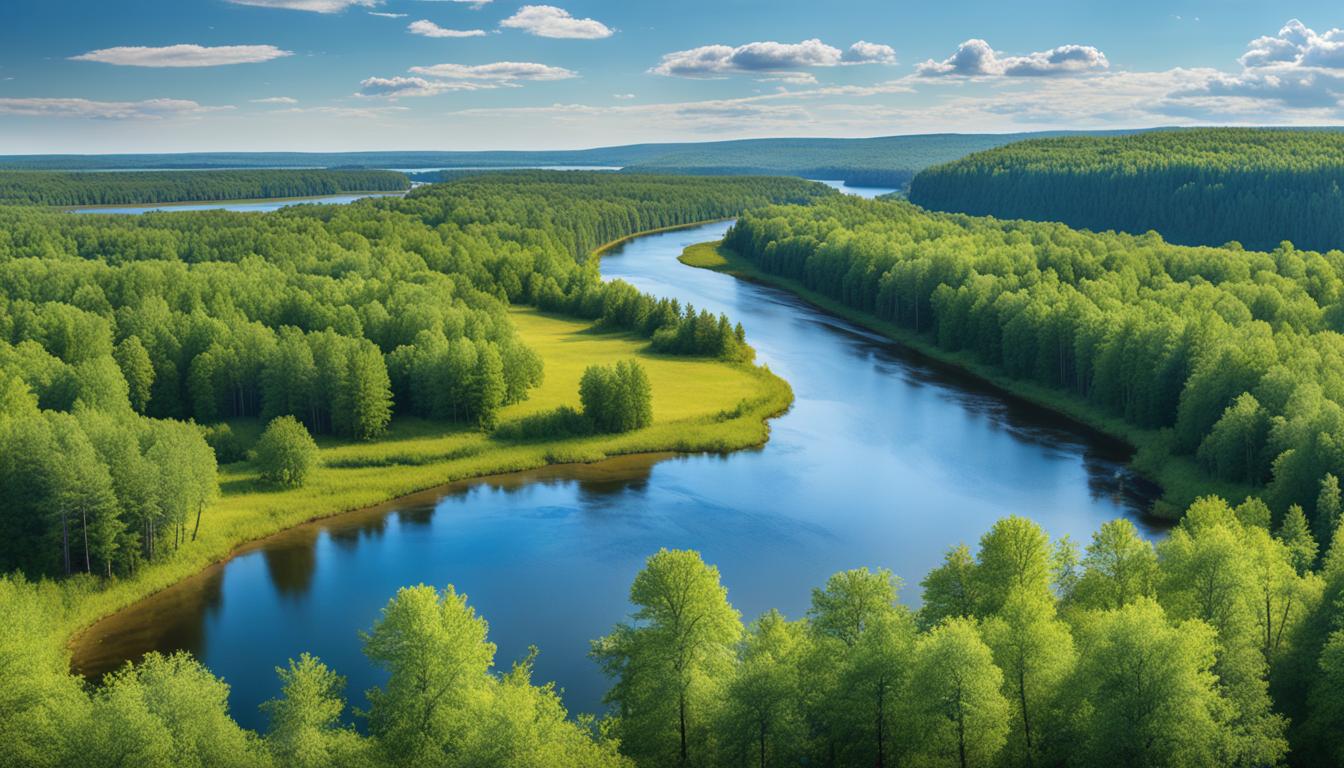Wild at Heart: Discovering Wisconsin’s Wildlife Refuges
https://www.youtube.com/watch?v=AImPeqNGSlU
Are you captivated by the idea of immersing yourself in untamed natural beauty? Wisconsin’s treasure trove of wildlife refuges is perfect for you. These areas are full of diverse flora and fauna. They invite outdoor enthusiasts, nature lovers, and birdwatchers to explore. They allow us to appreciate Wisconsin’s rich wildlife. This makes them ideal for anyone who loves the outdoors.
From the large Necedah National Wildlife Refuge to other sanctuaries across the state, Wisconsin’s wildlife refuges are a hidden gem. They are waiting to be explored by those who love nature. Let’s go on a journey to see the amazing sights these nature reserves offer. We’ll learn about the important role they play in protecting Wisconsin’s natural heritage.
Key Takeaways
- Wisconsin is home to a treasure trove of pristine wildlife refuges that offer visitors a chance to immerse themselves in untamed natural beauty.
- These protected areas are teeming with diverse flora and fauna, making them ideal destinations for outdoor enthusiasts, nature lovers, and birdwatchers.
- The article will explore the wonders of Wisconsin’s wildlife refuges, with a focus on the Necedah National Wildlife Refuge and the importance of these natural sanctuaries in preserving the state’s rich biodiversity.
- Visitors can enjoy a variety of outdoor recreation opportunities, including hiking, wildlife photography, and birdwatching.
- Wisconsin’s wildlife refuges play a crucial role in preserving the state’s natural heritage and protecting its diverse flora and fauna.
Necedah National Wildlife Refuge: A Treasure Trove of Natural Beauty
In central Wisconsin lies the Necedah National Wildlife Refuge. It covers 44,000 acres in Juneau County. Managed by the U.S. Fish and Wildlife Service, it’s filled with diverse ecosystems and life.
Diverse Ecosystems and Habitats
This refuge is a mix of wetlands, forests, grasslands, and savannas. Such variety is perfect for many types of wildlife. It’s key for keeping nature in balance.
Sandhill Crane Conservation Efforts
The refuge is vital for eastern sandhill cranes. They nest and breed here, showing its importance for their survival. It stands as a beacon for all wildlife conservation.
Outdoor Recreation Opportunities
Guests at the refuge find plenty to do. Hikes, photos of wildlife, hunting, fishing, and enjoying the outdoors are all here. There are many trails, platforms to see animals, and quiet places to relax.
Seasonal Highlights
The refuge welcomes all year. Spring and fall are special for bird lovers. Migrating birds fill the skies. It’s a top spot for birdwatching.
Wisconsin Wildlife Refuges: Protecting Nature’s Wonders

Wildlife refuges are key in saving Wisconsin’s natural beauty. They make sure the state’s diverse wildlife is safe and can grow. These refuges help keep Wisconsin’s environment healthy. This benefits the wildlife and the people who love these natural areas.
Upper Mississippi National Wildlife Refuge
The Upper Mississippi National Wildlife Refuge covers four states. These are Illinois, Iowa, Minnesota, and of course, Wisconsin. It guards special places along the Upper Mississippi River. These include islands and sloughs that are home to many birds and other animals.
Conclusion
Wisconsin’s wildlife refuges are rare gems, inviting us to experience the untouched splendor of the state’s nature. The Necedah National Wildlife Refuge is known for its work saving sandhill cranes. The Upper Mississippi Refuge helps millions of birds during their migrations. Both places are key for keeping Wisconsin’s nature safe.
Visiting and supporting these refuges means giving the gift of exploration to the next generation. They protect Wisconsin’s wide range of plants and animals. This helps ecosystems stay healthy and provides homes for local wildlife to flourish.
By valuing and defending these refuges, we help both nature and those who enjoy it. Protecting these areas means more chances for people who love the outdoors and observing birds. Let’s take on the duty of looking after these refuges. This way, they can stay beautiful and full of life for years to come.







